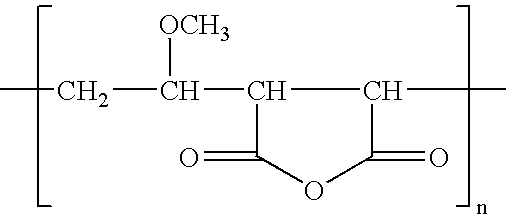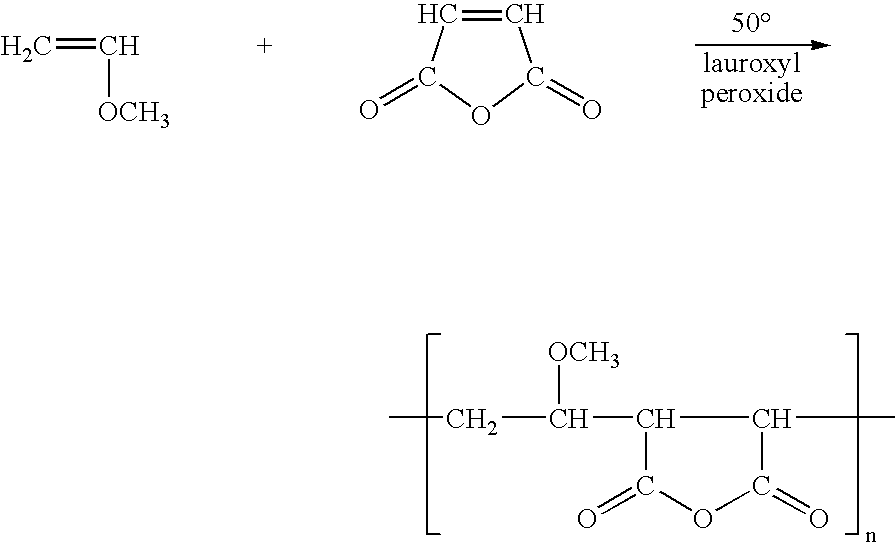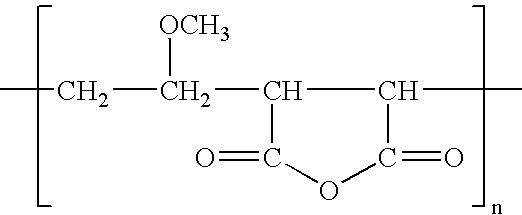Modified membranes
a technology of modified membranes and membranes, applied in the field of modified membranes, can solve the problems of demixing, solution becoming thermodynamically unstable, and unable to produce macrovoids
- Summary
- Abstract
- Description
- Claims
- Application Information
AI Technical Summary
Benefits of technology
Problems solved by technology
Method used
Image
Examples
Embodiment Construction
According to a first aspect the invention provides a porous polymeric membrane formed from a blend of a polymeric membrane forming material and an anhydride as a reactivity modifying agent adapted to modify the surface active properties of the porous polymeric membrane relative to a porous polymeric membrane formed from the polymeric membrane forming material alone.
The term “blend” as used herein refers to an intimate mixture or alloy of the polymeric membrane forming material and polymeric reactivity modifying agent which requires that the two components be compatible, ie miscible, with one another.
Preferably, the polymeric membrane forming material is of low reactivity relative to the reactivity modifying agent. The polymeric membrane forming material may in some cases desirably be inert.
Preferably, the polymeric membrane forming material is PVDF, especially hydrophobic PVDF.
In alternative preferred embodiments, the polymeric membrane forming material is polysulfone. The ...
PUM
| Property | Measurement | Unit |
|---|---|---|
| pore sizes | aaaaa | aaaaa |
| pressures | aaaaa | aaaaa |
| Softening point | aaaaa | aaaaa |
Abstract
Description
Claims
Application Information
 Login to View More
Login to View More - R&D
- Intellectual Property
- Life Sciences
- Materials
- Tech Scout
- Unparalleled Data Quality
- Higher Quality Content
- 60% Fewer Hallucinations
Browse by: Latest US Patents, China's latest patents, Technical Efficacy Thesaurus, Application Domain, Technology Topic, Popular Technical Reports.
© 2025 PatSnap. All rights reserved.Legal|Privacy policy|Modern Slavery Act Transparency Statement|Sitemap|About US| Contact US: help@patsnap.com



